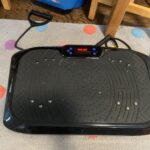
What is toe walking?
Toe walking is a walking pattern in which a child or adult walks on the balls of the feet or ‘tiptoes,’ without the heel coming in contact with the floor.
Should I worry about my child’s toe walking?
Toe walking is not always a cause for concern. Many children toe walk as they are beginning to learn to walk because the muscles that allow the heel-to-toe walking pattern have not developed fully. If your child toe walks and is still under the age of 3 you should not be concerned, as your child will likely grow out of the toe walking pattern. After your child turns 3, if he or she is still toe walking, consult your child’s pediatrician. Your child’s pediatrician may be able to determine the likely cause of your child’s toe walking and refer your child to a specialist (occupational therapist, physical therapist, or podiatrist) who can further assess and provide therapy if needed.

What causes toe walking?
There are many possible causes of toe walking as well as diagnoses linked to toe walking. Toe walking can be caused by physical or neurological symptoms.
- Sensory Processing Disorder (or sensory processing challenges)
- A child with Sensory Processing Disorder may have difficulties with vestibular processing which may lead to toe walking. Vestibular processing is related to the body’s processing of movement and the position of the head in space.
- Other children with Sensory Processing Disorder may be hyper-sensitive to tactile (touch) input and may walk on their toes to reduce contact between their skin and the floor. Your child may be sensitive to the temperature or texture of the floor or ground.
- Short or tight achilles tendon
- The achilles tendon is located on the back of the ankle and connects the heel bone to the muscles of the lower leg
- If this tendon is short or tight, it is difficult or impossible to flex the foot fully, which prevents the heel from making contact with the floor while walking
- Cerebral Palsy
- Toe walking due to Cerebral Palsy can be linked to injury or abnormal development in areas of the brain that control the muscles
- Muscular Dystrophy
- Muscular Dystrophy is a genetic condition that causes damage or weakening of the body’s muscles over time.
- If your child walked in a heel-to-toe pattern initially but then began toe walking, Muscular Dystrophy may be a possible cause.
- Autism Spectrum Disorder (ASD)
- Toe walking is common in individuals with ASD due to sensory processing difficulties or developmental delays
- Idiopathic Cause
- Toe walking may be idiopathic which means that the cause is unknown
- 7-24% of children display idiopathic toe walking
- Habit
- For some children, toe walking is not caused by any of the previously mentioned conditions.
- Toe walking can be due to habit
Consequences of Toe Walking
- Pain
- Toe walking may cause pain in the feet, ankles, knees, or hips
- Difficulty with Movements
- Toe walking can lead to difficulty with squatting or climbing stairs
- Muscle Weakness and Atrophy
- Toe walking can cause reduced hip and core muscle strength
- Irregular Bone Growth
- Toe walking can lead to differences in the way a child’s bones grow as they are developing
- Over time, this can lead to overstretched ligaments, joint pain, and an increased risk of injury
- Muscle Tightness
- Over time, toe walking can lead to muscle tightness in the muscles near the ankle and lower leg
- Tendonitis
- Toe walking can lead to tendonitis due to overuse and overcompensating of certain tendons
Treatments for Toe Walking
Toe walking is treatable and there are many options to help your child begin walking in a heel-to-toe pattern.
- Physical Therapy
- A physical therapist can work with your child to stretch the Achille’s tendon and muscles of the lower leg to improve the range of motion of the ankle
- The physical therapist will also help your child with exercises to strengthen the muscles that have been weakened due to toe walking
- Physical therapy for toe walking may also involve massage of the Achille’s tendon and muscles of the lower leg or foot to increase range of motion
- Physical therapists can provide education and training for parents and their children on use of orthotics, leg braces, or splints
- Physical therapists may apply athletic/kinesiology tape to your child’s lower leg and foot to facilitate stretching
- Occupational Therapy
- An occupational therapist can help with improving your child’s sensory processing abilities; treatment will likely focus on vestibular and tactile processing
- Occupational therapist can help your child with activities of daily living that are affected by their toe walking
- Occupational therapists can provide education and training for parents and their children on use of orthotics, leg braces, or splints
- During occupational therapy, the OT may also massage and stretch the Achille’s tendon and muscles of the lower leg to improve range of motion
- Occupational therapists will incorporate exercises (through play) that strengthen muscles affected by toe walking
- Orthotics
- Orthotics are custom-made shoe inserts prescribed by a doctor that can reduce toe walking over time
- Leg Brace or Splint
- Leg braces or ankle-foot orthoses (AFOs) that stretch the Achille’s tendon and lower leg muscles may be prescribed
- These devices are usually worn for short periods of time (~30 minutes) during the day while walking to improve range of motion over time
- The braces can be adjusted as your child’s range of motion improves
- Casts
- A cast can be placed on you child’s lower leg, ankle, and foot
- The cast will hold your child’s leg and foot in a properly aligned position that will stretch your child’s Achille’s tendon and lower leg muscles over time
- The cast will be checked weekly and may be adjusted to increase stretching over time
- Surgery
- If none of the previous treatment options helped to improve your child’s toe walking, you may consult with your child’s pediatrician and podiatrist to inquire about surgical options







